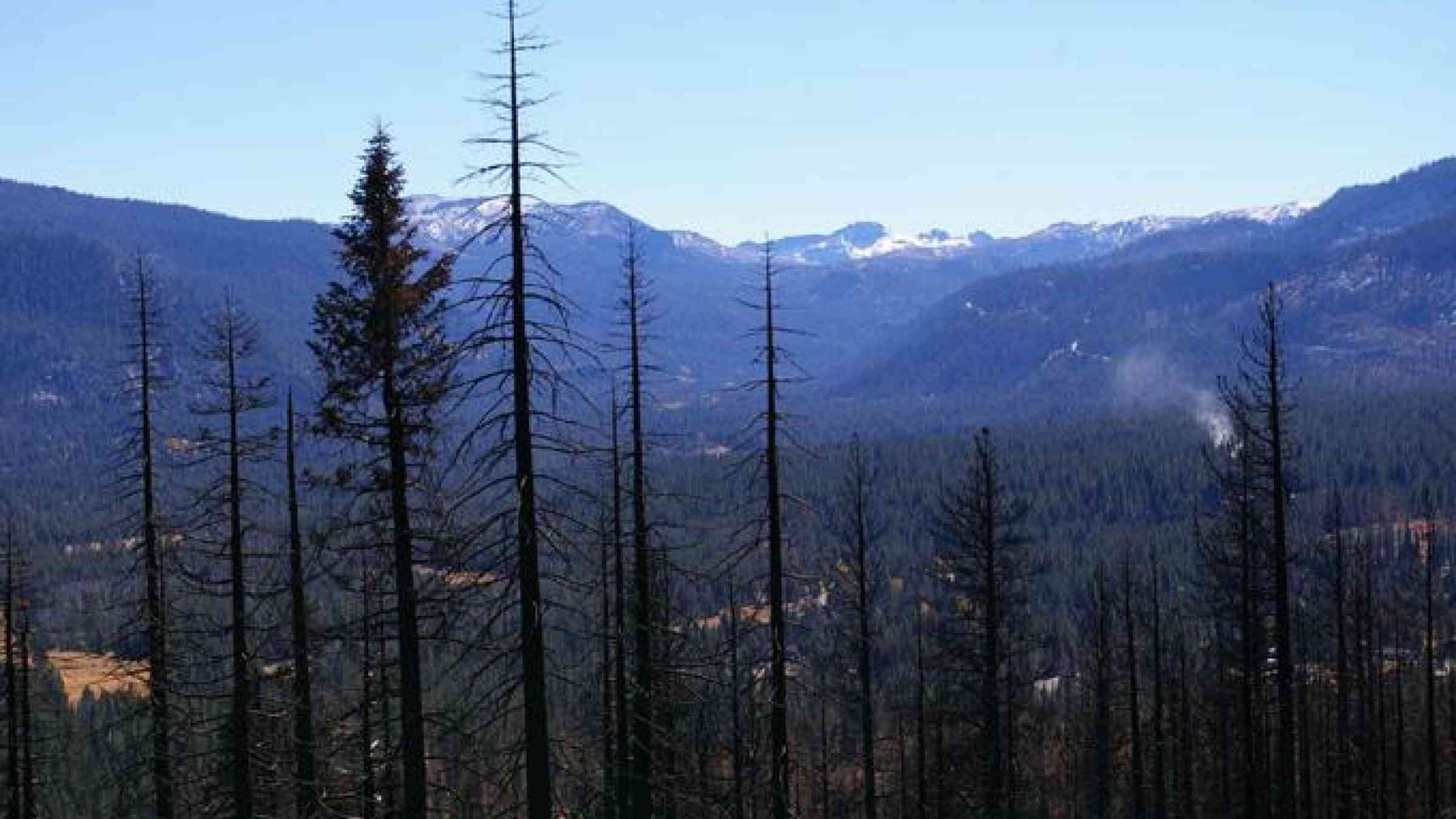Fire camera system helps firefighters respond to catastrophic wildfires

By Mike Wolterbeek
University’s partnership with Tahoe Prosperity Center expands mountaintop monitoring
In a year when huge-scale fires devastated areas of the American West, the AlertTahoe mountaintop fire camera system has been helpful in adding another level of protection in keeping Tahoe residents, forests and the clarity of the lake safe from catastrophic fires.
A year-long partnership between the University of Nevada, Reno and the Tahoe Prosperity Center has produced an expansion of this unique monitoring system and its usefulness to firefighting officials, by providing either fire discovery, early intelligence and/or situational awareness for more than 30 wildfires within the Lake Tahoe basin, and another 50 fires this past fire season for the region surrounding this High Sierra gem.
"It's a wonderful partnership that protects our community from economic, environmental and community disasters," Heidi Hill Drum, CEO of the Tahoe Prosperity Center, said. "We can attribute that to the fire camera system. We're excited to be able to secure funding for this important initiative."
The system is designed, built and maintained by the University's Nevada Seismological Laboratory. It features 15 cameras that circle Lake Tahoe and stretches north of Truckee, south to Carson City, west toward Placerville, and out into the Northern Nevada Great Basin mountain ranges, where another eight cameras are operated in conjunction with the Bureau of Land Management. Another seven HD cameras will go live in and around the Lake Tahoe Basin before next fire season thanks to fundraising spearheaded by the Tahoe Prosperity Center.
"There was about a four-fold increase over the number of fires monitored from last year, due mostly to more cameras as well as increased fire activity near the south shore area of Lake Tahoe," said Graham Kent, director of the seismological lab, a public service department in the University's College of Science. "Without the funding from the Tahoe Prosperity Center, we wouldn't have been nearly as successful supporting the firefighting agencies. The Tahoe Prosperity Center gets it - this is an important service to the Tahoe community and needs to be funded."
The Tahoe Prosperity Center, a regional collaborative triple bottom line organization, has raised about $125,000 for the system so far. It has funded six of the cameras to be installed beginning this fall/winter.
"Private fundraising has been absolutely critical to get money for cameras between central Nevada where the BLM has funded cameras and the west slope of the Sierra where the U.S. Forest Service has funded cameras," Kent said. "The Tahoe Prosperity Center has filled in that gap in a critical way to provide cameras where people live, namely in and around Tahoe, Carson City, Reno and Truckee."
"The reality is, that for the next fire season, any cameras near the wildland-urban interface are almost certainly going to be a result of Tahoe Prosperity Center fundraising, including new cameras at Zephyr Cove, Alpine Meadows, Martis Peak, Mt. Rose and Bald Mountain, which will fill the gaps and help protect the Tahoe, Truckee, Carson and Washoe Valley areas," Kent said.
The cameras are strategically located on mountaintops around the region and are used by wildland firefighting agencies for quicker, more efficient responses. Traditionally, fire managers would send planes to spot and monitor fires, which takes time and resources, they can now use the cameras in the areas of coverage to do the same, as if they were sitting on the mountaintop overlooking the fires. The expansion funded by the Tahoe Prosperity Center moves the coverage closer to homes and businesses.
"The primary concern is, of course, safety for residents and firefighters, but one also needs to consider critical issues such as economic resiliency," Kent said. "The camera system can mitigate many of the catastrophic fires by enabling a more rapid response by firefighters. In some cases, the cameras may only provide early intelligence to enable a faster turnaround on evacuations, resource management and fire suppression response. The system can also oversee control burns to ensure the maximum level of monitoring and oversight."
Despite decades of environmental studies, mitigation, regulations and nearly $3 billion of investment, a catastrophic wildfire at Lake Tahoe would devastate the environment and the economy, undoing the decades of work to protect the cold, clear waters - thereby putting the brakes on a thriving tourism industry.
Nine years ago, the Tahoe community learned firsthand what a catastrophic fire could do to the Tahoe Basin when the Angora Fire destroyed homes and businesses, damaged the environment and racked up $11.7 million in firefighting costs. In June 2007, the Angora Fire burned 3,100 acres of South Lake Tahoe. The cost to fight the fire and property loss totaled approximately $160 million and economic losses of an estimated $1 billion.
More recently, in 2014, the King Fire burned more than 97,000 acres in nearby El Dorado County, just over the Sierra crest, with a total cost of close to $150 million. A map of the King Fire overlaid onto the Lake Tahoe Basin shows a chilling image: a burn of similar size would engulf Lake Tahoe's entire west and south shore.
"AlertTahoe is easy insurance for our communities," Hill Drum said. "Each AlertTahoe camera costs about $25,000 including the camera, tower, equipment, installation and connections to the network. Investing in these cameras now can prevent another devastating fire."